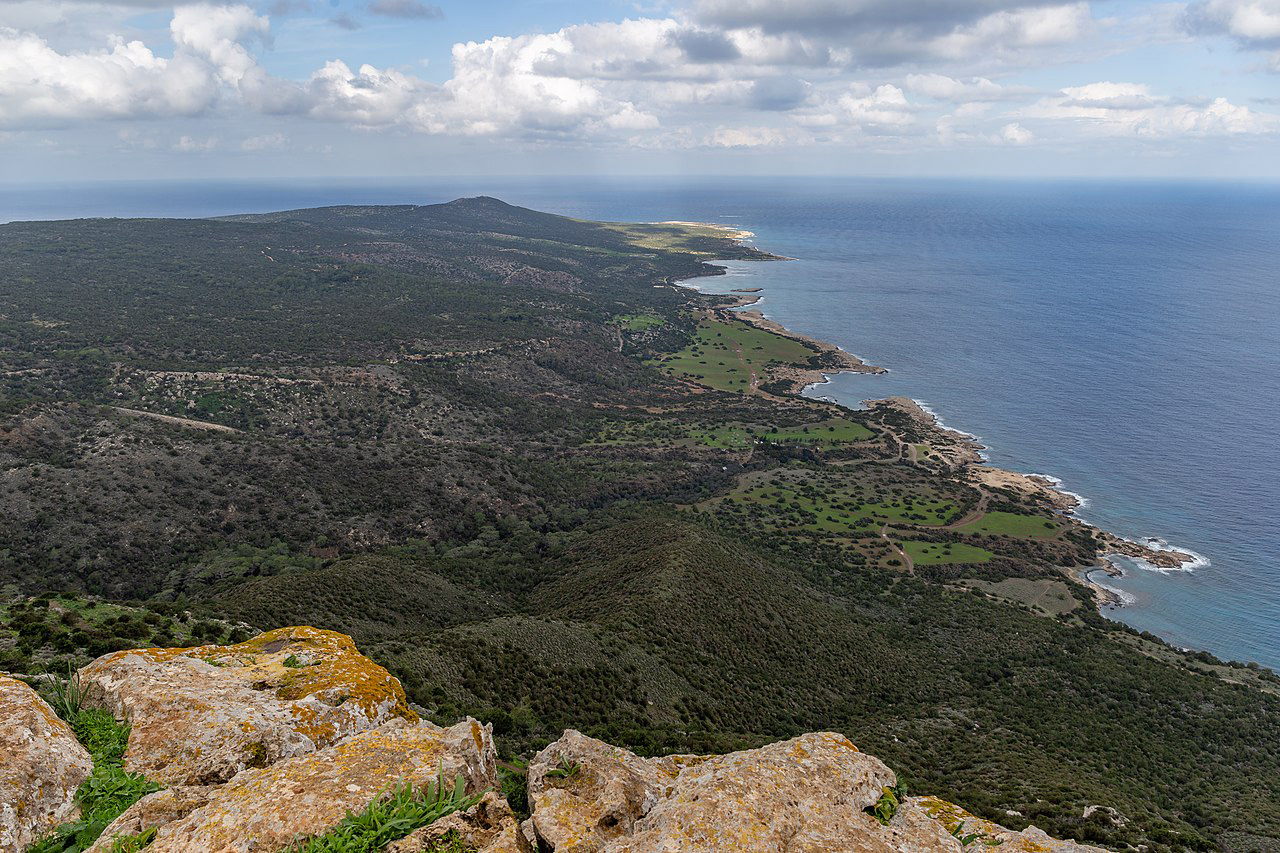Environment dept due to deliver final opinion on Monday. And their decisions are binding
By Elias Hazou
The Akamas zoning/development plan, to be unveiled by month’s end, is almost guaranteed to please no one. And that’s virtually inevitable, as devising the plan involved a delicate balancing act between the wants of conservationists and the needs of local communities.
The Akamas plan incorporates the administrative boundaries of eight Paphos communities: Kathikas, Pano Arodes, Kato Arodes, Ineia, Droushia, Fasli, Androlikos and Neo Chorio. It concerns a coastal area covering a total of 181 square kilometres and with a 45 km shoreline. The area includes the Akamas State Forest, while a large part of it (approximately 50 per cent) falls within the European Natura 2000 Network, including the area covered by the state forest.
The government intends to charge visitors a small entrance fee for the National Forest Park.
Speaking to the Cyprus Mail, Agriculture and Environment Minister Costas Kadis said the relevant studies have been completed.
“I expect the Department of the Environment (DoE) to deliver its final opinion by Monday, August 8. This final opinion will more or less have the same clauses as the preliminary opinion [issued recently], perhaps proposing some further restrictions to development.”
The recommendations of the DoE are binding.
The week after that, the DoE will forward their opinion to the interior ministry’s Planning Bureau, which in turn will formulate its own final report.
According to Kadis, that should be done by the end of the month, or early September at the latest.
Next the Akamas plan will be published in the government gazette, taking immediate effect. There follows a period for appeals, but during this period the Akamas plan is still in force. Any member of the public can file an appeal.
Asked to summarise the outstanding issues, Kadis cited four.
First, the DoE (as well as environmental groups) has objections to scattered developments – isolated housing units. It advocates doing away with these completely, arguing that isolated residences here may intrude on conservation areas. By contrast, the Planning Bureau wants to allow isolated residences up to 500 metres from community zoning boundaries.
Second, the proposed quarry zone in Androlikos. Whereas the Planning Bureau agreed to reduce the size of the zone, the DoE wants it shrunk even further.
Third, the new tourist zone in Ineia village. The DoE has concerns over this zone, and proposes it be shifted to another location.
Seeking to allay concerns, the government argues this zone is located more than six kilometres (in a straight line) from the turtles’ spawning beaches. In this area, the proposal is for constructing buildings up to two floors. To avoid certain possible adverse effects from light pollution, the plan being devised proposes the adoption of strict controls over lighting in accordance with international practices. The measures aim to ensure that structures do not emit direct light toward the direction of the spawning beaches, and to limit diffuse lighting to a minimum.
The fourth major issue relates to the so-called visitable farmhouses or ranches. Under the original plan there were eight inside the Natura 2000 protected area, and 20 outside it. The DoE says that such ranches should be allowed only outside Natura 2000, and then only close to existing services (electricity, water supply).
There’s also the question of whether, in practice, building-related exceptions granted over the course of time would water down the Akamas plan as to make it unrecognisable. Queried about this, Kadis thought it highly unlikely.
“There are a host of NGOs watching closely, and they’ve got an open line to Europe,” he said, alluding to the European Commission.
Every year approximately one million people visit the Akamas.
Following the DoE’s release of its preliminary opinion on the Akamas plan, conservationists called it a case of too little, too late. In a statement in late July, the Cyprus Federation of Environmental Organisations (Opok) said problematic provisions remain, such as the creation of a new quarry zone for Androlikos, a new tourist zone for Ineia, and the inclusion of protected beaches into the coastal tourist zones of Neo Chorio.
Opok also said that there were omissions in the documents, namely, no proposed alternative sites for specialised developments were submitted for assessment, neither was there stipulation for compensatory measures and appropriate urban planning tools for the communities of Ineia and Droushia, in violation of the provisions of the European Union directives on habitats and birds.
The environmentalists also drew attention to the absence of sufficient demarcation for certain areas (the so-called ‘special conservation’ zone and the ‘special protection’ zone which include the Ayia Aikaterini and Ayia Paraskevi gorges), and pointed out in that in terms of biodiversity protection, it was important to view the entire area of the Akamas peninsula as a whole.
Criticising what it called the “scattered building and incompatible development” proposed by the plan (which in turn requires significant expansion of infrastructure, such as electricity, water supply and drainage, public roads), Opok maintained the plan will lead to habitat fragmentation, displacement of wildlife, degradation of natural landscapes, and significant biodiversity loss as a result.
Animals whose habitats would be threatened include nine species of birds, the indigenous Cyprus beetle, as well as the Egyptian fruit bat, locally known as ‘Nyktopapparos’.
In their statement, the coalition of environmental groups called for the outright abolition of certain parts of the plan and offered alternatives for other parts. They also argued the Akamas and Peyia local plans should be jointly assessed on the basis of conservation objectives also taking into account the Akamas National Forest plan, saying all three development plans result from the same decision of cabinet dating from 2016.
Charalambos Theopemptou, leader of the Green party, says the reason behind the reactions is the extent to which government is willing to allow “developments” within the Akamas area.
“I know that now, after the preliminary report, they downplay the fact about the extent of proposed developments.”
He went on to list the types of developments that are allowed as the plan now stands: environmental information centres; parking spaces within Natura 2000 sites; canteen/refreshment sites; sports and athletics complexes; wineries; dairy factories; fruit-packing businesses; large product stores; light and heavy industrial type developments; tourist and large specialised developments.
“And,” Theopemptou adds, “the by now infamous farmhouses/ranches that will accept sleeping guests”.
Some of these were proposed for the Natura 2000 protected sites but for the moment it appears that these will not go ahead.
Earlier, the government had dismissed as ‘myth’ the notion that these farmhouses will double as covert hotels scattered both inside and outside the Natura 2000 area.
On paper, the plan states that within the areas of Natura 2000, and up to 200 metres from this boundary inside rural areas, overnight stays are prohibited; in the remaining rural areas, the maximum number of beds is 16. Farmhouses covered by this provision will be located near electricity, water, sewage and other services, so that it is not necessary to undertake extensive works in order to link them with ancillary infrastructures. As such, for the most part they will be located near the communities.
In addition, the zoning of these ranches “will seriously take into account the distance from important habitats (e.g. nests, mating areas) for priority species”.
Within the agricultural land inside Natura 2000, there is provision for creating eight visitable ranches, but these will not be permitted to host people for overnight stays. Outside Natura 2000, and in the purely agricultural area of approximately 56 square kilometres, the maximum number of visitable ranches which could potentially be created, is 20.
Regarding the area outside Natura 2000, Theopemptou remarks that government officials “avoid telling people what will be allowed and they rather focus on what will not be allowed”.
A major controversy relates to the right to build isolated housing units anywhere on land defined as agricultural.
“They say not to worry, as this right will only be given to genuine village residents. This is exactly what applies elsewhere on the island,” he said.
“But anyone can obtain the signature of the village mukhtar [community leader] falsely stating that the owner of the land lives in the village. Not only that, but once the permit for a house is obtained one can apply and get a permit for three extra buildings on the plot.”







Click here to change your cookie preferences